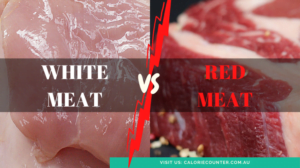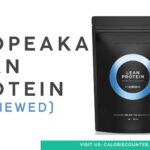How do white meats compare to red meats in terms of calories, protein, iron and other nutrients? Time for a quick post with quick answers to a quick question! First up, let’s define which is which, that is, what’s a red meat and what is a white meat?
White Meats
White meats are those with a relatively small amount of myoglobin in them (myoglobin is what makes meat red). In general, meat is classified as white if it is not too pink (or red, obviously). How much is “too pink”? You might as well ask how long a piece of string is, because there are no agreed colour gradient separators. In this post we’re looking at incontrovertible common white meats which will give you a good idea of white meat nutrition: chicken breast, turkey mince, and prawns.
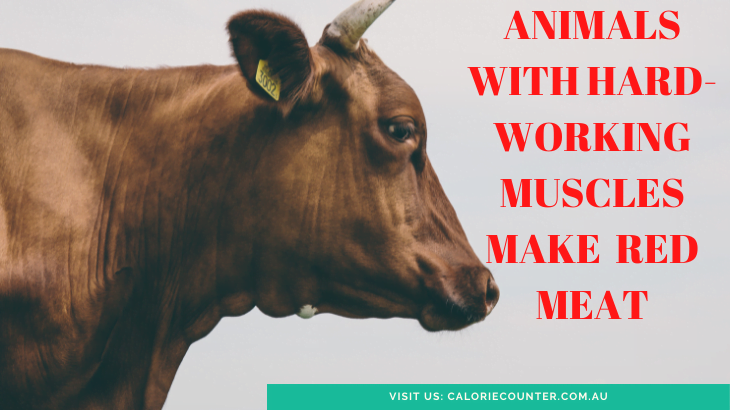
Red Meats
In food animals, red meat usually comes from muscles which are used almost continuously by the animal. The older and more hard-working the muscle, the redder the meat. Mature cattle spend all day on their feet, standing and walking, so their meat is red. Common market pork comes from young hogs which do not roam the bush foraging for food, so their meat is less red. For this article we look at lean beef mince, lamb chop, and pork chop.
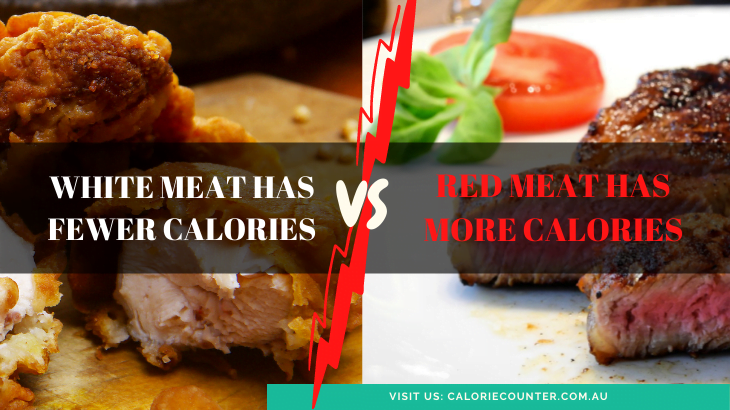
White Meat VS Red Meat Calories
Red meat generally has more calories than white meat, because it usually has more fat in it than white meat. For example, lamb chops have more than 70% more calories than chicken breast. Pork chops have more than 85% more calories than prawns. These might be extreme examples, but the concept holds true in most cases. Of course, there are exceptions to this “rule”, as turkey mince has 8% more calories than lean beef mince.
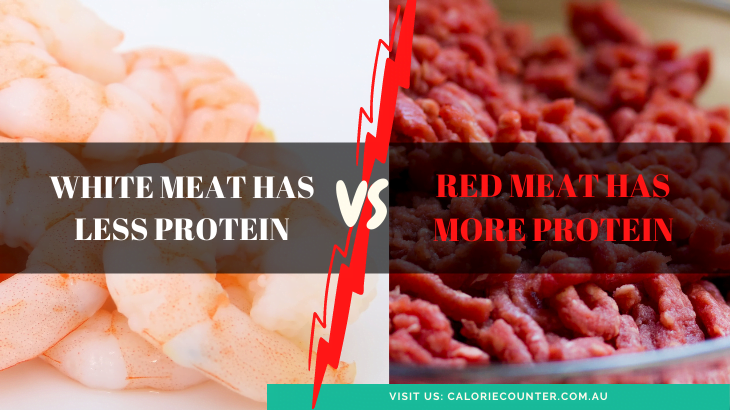
Protein in Red Meat compared to White Meat
As a general rule of thumb, white meat has less protein than red meat. However, the difference is usually very small, except in the case of shellfish and crustaceans. Most cuts of red and white meat have between 18-21 grams of protein per 100 grams of weight. Shellfish and crustaceans like mussels and prawns have much less protein than other white meat (12-15 grams of protein per 100g). Red meat has a slight (about 5%) protein advantage over other white meat, although meat cut is a more important factor when it comes to protein difference.
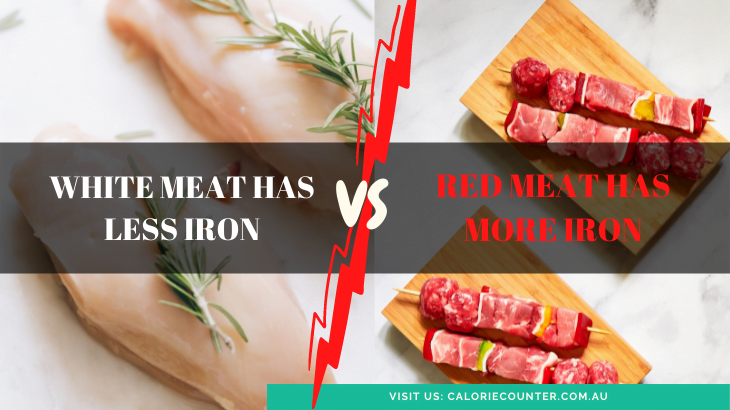
Which has more Iron and Other Micronutrients?
When it comes to micronutrients, especially iron and other minerals like zinc, red meat beats white meat. Red meat often has 2 to 5 times the iron of white meat, for example lean beef mince has 2.38mg iron per 100g, compared to 0.37mg iron in chicken breast. Lamb chops have 1.75mg iron to the 0.21mg iron per 100g in prawns. It is a similar story for zinc, when you consider that turkey mince has 2.35mg zinc per 100g, compared to 5.09mg zinc in lean beef mince. Again, there are exceptions – that same turkey mince zinc beats the 1.55mg zinc in pork chop.
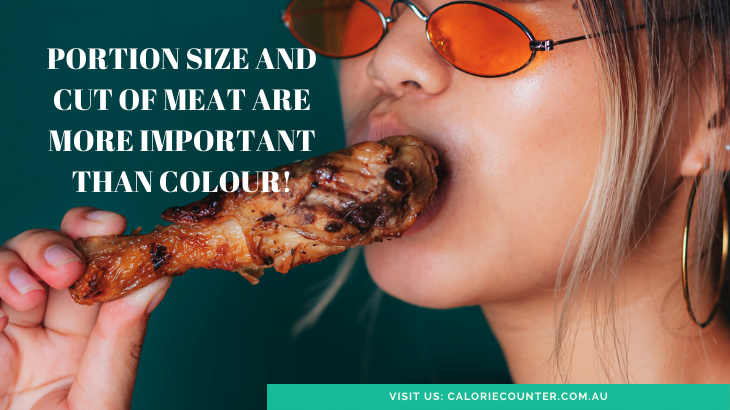
White Meats or Red Meats which is better?
In the lab, considering nothing else but nutrients, red meat is better than white meat. However, in the real world there is not much of a difference because your choice of cut and your portion size has a far greater impact on the calories and nutrients from either. Meat, red or white, is a crucial part of a healthy balanced diet!
